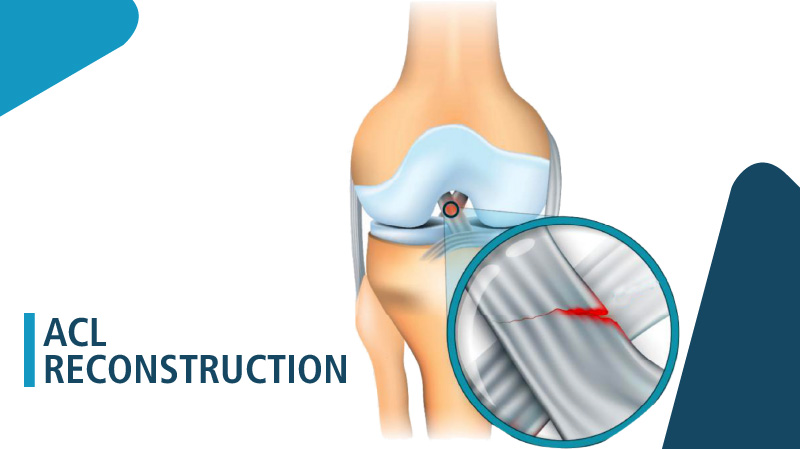

A rupture or sprain of the anterior cruciate ligament (ACL), one of the powerful bands of tissue that aids in connecting your thigh bone (femur) to your shinbone, is referred to as an ACL injury. Sports involving abrupt stops or changes in direction, jumping, and landing, such soccer, basketball, football, and downhill skiing, are the most typical culprits for ACL injury.

Anterior Cruciate Ligament Surgery will let you resume regular activities like running, cycling, and the occasional weekend hike and regain full functionality of your knee.
ACL reconstruction in patients older than 60 years is conducted in terms of functional recovery, return to professional sports, and postoperative incidence of osteoarthritis
Three bones meet to form the knee joint: the femur (thighbone), tibia (shinbone), and patella (kneecap). The kneecap sits in front of the joint to provide some protection. Bones are connected to other bones by ligaments. There are four primary ligaments in your knee. They act like strong ropes to hold the bones together and keep your knee stable.
Collateral Ligaments : These are found on the sides of your knee. The medial collateral ligament (MCL) is on the inside, and the lateral collateral ligament (LCL) is on the outside. They control the side-to-side motion of your knee and brace it against unusual movement.

Cruciate Ligaments: These are found inside your knee joint. They cross each other to form an X, with the anterior cruciate ligament (ACL) in front and the posterior cruciate ligament (PCL) in back. The cruciate ligaments control the front and back motion of your knee. The anterior cruciate ligament runs diagonally in the middle of the knee. It prevents the tibia from sliding out in front of the femur and provides rotational stability to the knee. The PCL keeps the shinbone from moving backward too far.

ACL injuries often happen during sports and fitness activities that can put stress on the knee:
Anterior cruciate ligament reconstruction surgery comes in a variety of forms, all of which are equipped to offer the patient the best-functioning knee possible. The variability depends on the material used to create the graft, the new ligament. Patellar tendon autografts, hamstring autografts, and allografts are the three primary graft alternatives.
Book a free online consultation regarding Anterior Cruciate Ligament Surgery at neemtreehealthcare.com

50+ Specialist Onbaord

35+ Years of Experience

24X7 Medical Assistance

Free Pick & Drop

PSUs & TPA & Insurances are Accepted

All Govt Panels Accepted

Post Surgical Rehabilitation

EMI Option Available

Post Discharge Home Care

Transparency

Hassle Free TPA/Panel Desk

Medical Visa Assistance
Our proficient team of skilled and best revision total hip replacement specialists, doctors/surgeons in Delhi, provide best-in-class treatment to ensure pain relief, improved mobility and a better quality of life. Our compassionate and immensely experienced panel of revision total hip replacement specialists doctors/surgeons adhere to world-class technology for innovative care and seamless assistance for your speedy recovery.
The treatments mainly depend on the damage. If it is minor conservative management with medications, rest and physiotherapy can be done. However, ACL surgery is a must if you have severe damage. Above all, you need to go to an experienced surgeon.
The cost of the treatment varies depending on the situation of the injury. Post a proper diagnosis is done by our experts, only then we finalize the costing.
Our team of experts follows the ACL rehabilitation protocol and will guide you through the process.
ACL surgery is a reconstruction of anterior cruciate ligament with the tendon graft.
ACL surgery is a reconstruction of anterior cruciate ligament with the tendon graft.
ACL surgery takes around 6 to 9 months to recover. The ACL recovery time varies from person to person depending on their medical severity.
ACL minor tears- partial tear- Major tears-complete tears (replace minor tear with partial and major with complete tear) are treated non-surgically, whereas major tears require well-planned surgical treatments.
Protective braces and physical therapy are enough to strengthen your muscles and get you back to walking normally.